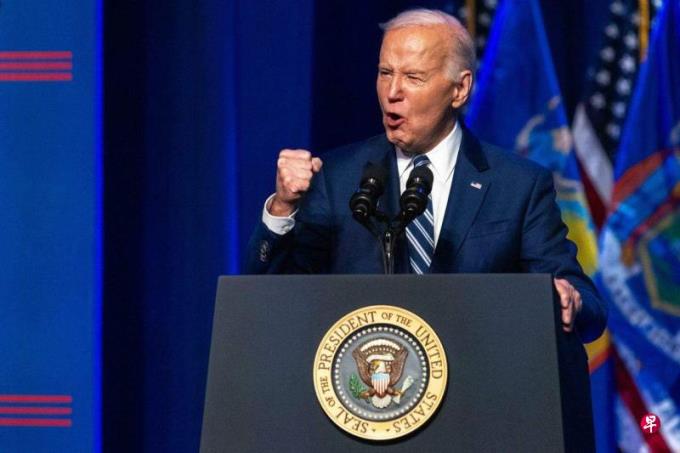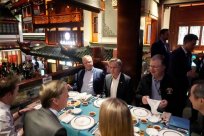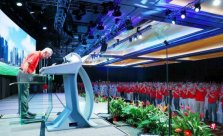
Because Huawei's laptop is equipped with Intel's high -performance processor, it has caused the US Republican Party to criticize the semiconductor policy of the Biden government.In response, US Secretary of Commerce Raymond Doro recently stated high -profile that the United States has the world's most advanced semiconductor.Since the 2022 chip bill passed, the Bayeng government has invested hundreds of millions of dollars in funds, subsidized and loans to domestic and foreign semiconductors, and produced advanced semiconductors in the United States.However, whether the results you have seen so far, it may be questionable whether the United States can make the United States a powerful country for production.
Raymond mostly in the 60 -minute interview with the famous American current affairs show on the weekend that the US chip export control is playing a role.A few years behind.She also said: "We have the world's most advanced semiconductor, but China does not."
Semiconductor support decision -making lack of transparency
Huawei launched a laptop equipped with a high -performance processor with a high -performance processor in Intel's new Core Ultra 9 on April 11. The Republican member of the US Congress was shocked and annoyed.Green light was turned on.It is generally believed that Raymond's speech is a response to the incident.As early as 2019, Huawei was included in the trade restrictions on the relevant provisions of the US sanctions on Iran in 2019, which means that Huawei's US suppliers must apply for a special and difficult permit before shipping Huawei.
People are puzzled that the United States' policy against Huawei is so aggressive, and the intention should be Huawei.But in such efforts, all vulnerabilities were not blocked.What's even more, the Ministry of Commerce of the United States held up the long -term pressure on the outside world, granted the Intel license to awarded the advanced central processor to Huawei, and did not explain the reason for this decision.Semiconductor support decision -making lacks transparency; for Intel's competitors, this decision also puts them in an unfair and uncertain situation.
As Intel's American Enemy Super Semiconductor (AMD), it is the most empathetic to such a situation.After Chanden entered the White House, Chaowei also applied for a license similar to sales chips, but he was not approved, and he did not receive the reason why he could not obtain a license.This decision has led to ultra -micro's revenue and market share in China.According to the data cited by an ultra -micro internal conference, the Huawei laptop was equipped with a super micro ratio, from 47.1%in 2020 to 9.3%in the first half of 2023.In contrast, Intel's share in Huawei's laptop during the same period has soared from 52.9%to 90.7%.The ultra -micro report also stated that this dramatic transformation has led to a large "estimated income difference" between China between the two companies, and by 2023, it will exceed 512 million US dollars (about S $ 698 million).
If the Biden government is so thin in dealing with the supply of Huawei chip supply, it may only impact the image score of its semiconductor policy, then in terms of the chip bill that has been proud ofTwo major concerns such as continuity.
According to the chip bill, the U.S. government has invested 50 billion US dollars of allowances and tax credits to regain the US chip industry.The most noticeable semiconductor industry is TSMC.TSMC is building two wafers in Phoenix City, Arizona, and the third factory is expected to be completed by 2030.TSMC recently promised to raise investment to $ 65 billion.To this end, the Biden government said it would invest 6.6 billion yuan in subsidies and 5 billion yuan loan.Raymond Doro specially proposed the investment in the accumulated electricity to affirm the value of the chip method.
Is the TSMC selected Arizona?
The problem is that TSMC will continue to produce most cut -end chips in Taiwan.The construction process of the two factories in Phoenix City is not smooth sailing. The production of the first factory is expected to be between this year and next year.And it may be used for less high -end production, not necessarily to create advanced three -nano -chip.As for the third factory that was put into production in 2030, even if the advanced chip was produced, the economist estimated that it could only produce about 80,000 wafers per month.EssenceIt is difficult to build and operate a wafer factories in the United States.The reason why TSMC's second and third wafer fab has been postponed, mainly related to a construction union in Arizona, which uses the long -term dispute between the construction of the Taiwanese workers to build a factory.The dispute came to an end.In addition, the United States' environmental protection festival also affects the construction process in the early stage.Raymond Doro warned last October that if it had not obtained exemptions on the grounds of national security, a wafer plant project like TSMC would be put on hold for many years due to the environmental review required by federal funds.
It is worth mentioning that the location of the wafer factory in Phoenix City is not without controversy and hidden concerns.TSMC's wafer production business consumes water, and the entire Arizona has been suffering from drought, and Phoenix is no exception.Although local officials insist that TSMC will have enough water supply, Arizona has limited some new residential development projects due to insufficient groundwater last year.It is actually a big question mark for whether the guarantee of Phoenix officials can stand the test.
This also has to doubt some people. In the name of national security, the selection of water -deficient Arizona Power to set up a factory to promote the production of the local semiconductor industry.Get this key swing state support ticket.In fact, TSMC's project sustainability problem will inevitably become secondary.
In short, Raymond may be right in the United States to obtain the world's most advanced semiconductor, but if it means that the United States can become the world's most advanced semiconductor production power, there is still a small gap with reality.
The author is a local current affairs commentator




